
13 Climate Action (128)
Take urgent action to combat climate change and its impacts
This weekend: Enjoy music, nature and protest at Reclaim the Ridge
Written by Hellbender Press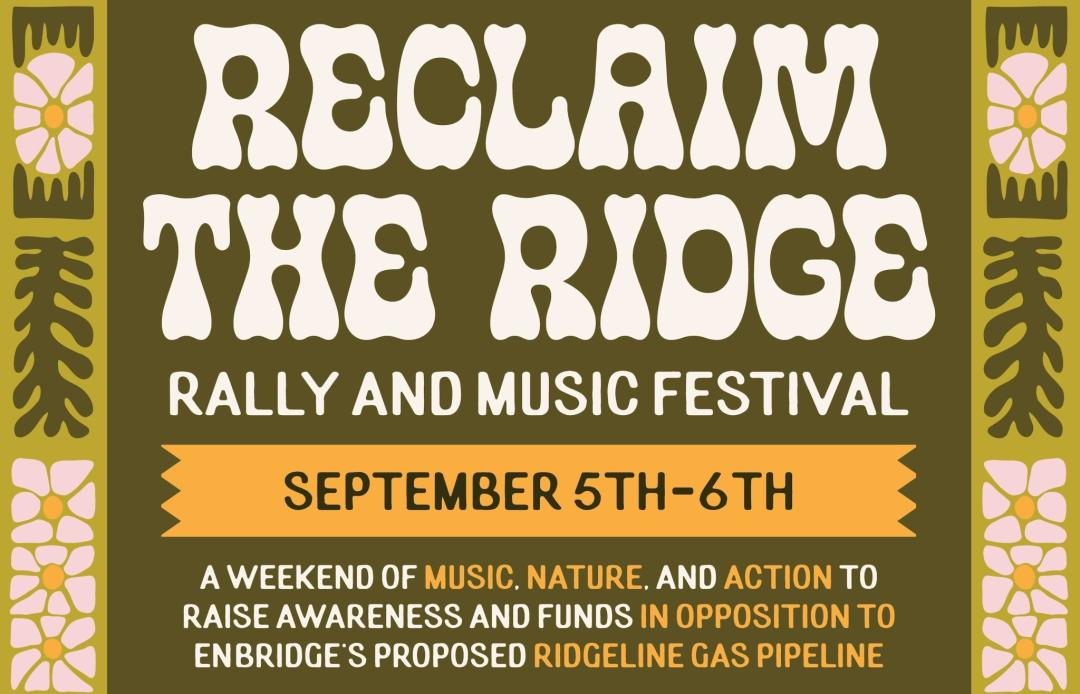
Allies come together to fight Enbridge’s Ridgeline gas pipeline through Obed watersheds
LANCING — Reclaim the Ridge is a weekend of music, nature, fun and action to raise awareness and funds in opposition to Enbridge’s proposed Ridgeline gas pipeline — set to slice across 122 miles of Tennessee and make 162 waterway cuts through tributaries of the Obed Wild and Scenic River system.
Project opponents and the like-minded plan to gather for Reclaim the Ridge Sept. 5-6 at the Lilly Pad Hopyard Brewery for an unforgettable time featuring live music by The Local Honeys, camping, hiking, swimming and giant puppets from the Cattywampus Puppet Council!
Network alert: Tennessee Sustainability Conference set for Gatlinburg
Written by Cindy Dupree Holloway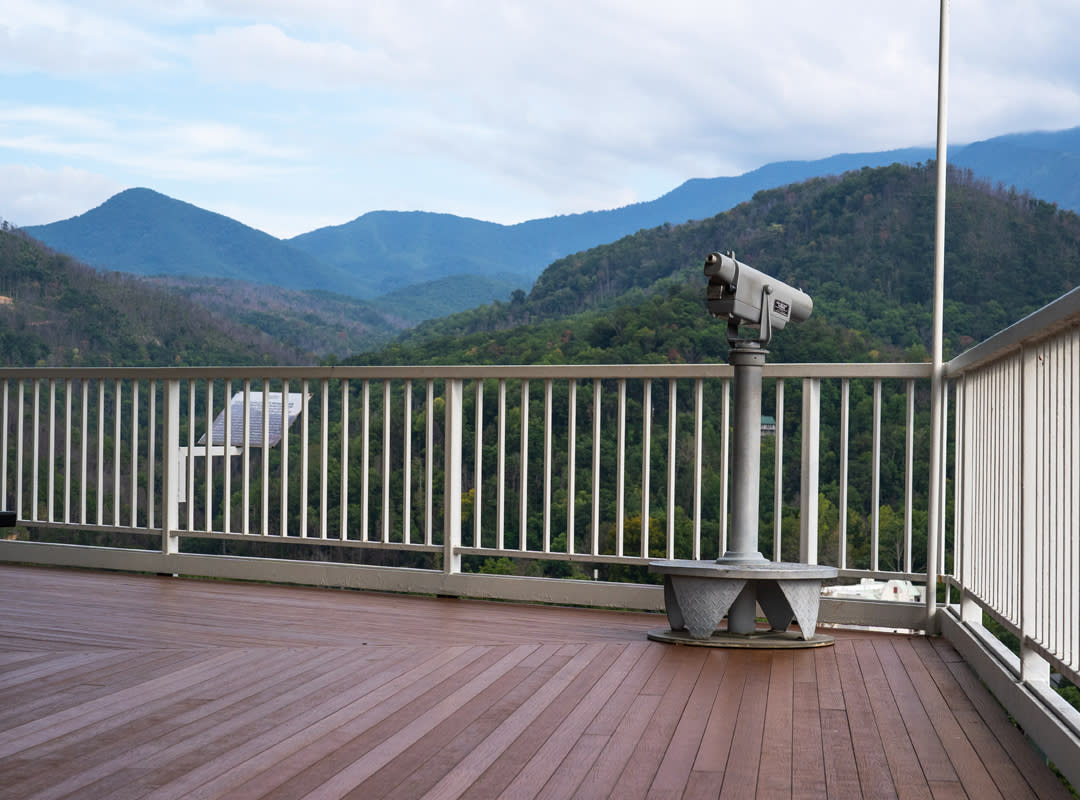 The towering Space Needle in Gatlinburg offers views of Great Smoky Mountains National Park. The city is host to the Tennessee Sustainability Conference set to begin Aug. 20. Gatlinburg Chamber of Commerce
The towering Space Needle in Gatlinburg offers views of Great Smoky Mountains National Park. The city is host to the Tennessee Sustainability Conference set to begin Aug. 20. Gatlinburg Chamber of Commerce
Conservation education event is hosted in part by Tennessee Chamber to address sustainability challenges
GATLINBURG — The annual Tennessee Sustainability Conference is scheduled to take place Aug. 20-22 at the Park Vista Hotel. The conference is a partnership among Tennessee Recycling Coalition, Tennessee Chamber of Commerce and Industry, and Tennessee Environmental Conference. It brings together environmental professionals from across the region.
Nearby Great Smoky Mountains National Park is an internationally known treasure trove of biodiversity and accompanying sustainability research.
“The three-day event will provide attendees an accelerated learning opportunity featuring the latest trends and best practices in environmental sustainability,” said Tennessee Recycling Coalition Executive Director Amber Greene. “Staying on the cutting-edge of our ever-growing industry is essential to improving the lives of all Tennesseans. I encourage environmental leaders across the state to join us.”
According to organizers, the event will bring environmental professionals, decision-makers, government officials, business and industry leaders, attorneys, consultants, engineers, developers, architects, agribusiness leaders, energy experts, water planning districts, universities, public health officials, and solid waste and recycling experts, from across the region to learn about the latest trends and best practices in environmental sustainability.
- tennessee sustainability conference
- gatlinburg events
- sustainability education
- sustainability research
- sustainable agriculture
- sustainability
- tennessee recycling coalition
- amber greene
- park vista hotel
- learn about sustainability
- brownfield program
- brownfield remediation
- tire disposal
- green events knoxville
- solid waste
- mayors retreat gatlinburg
- great smoky mountains national park
- science research
Editorial: As summer sizzles and pops, EPA makes a bad energy move
Written by Stephen Smith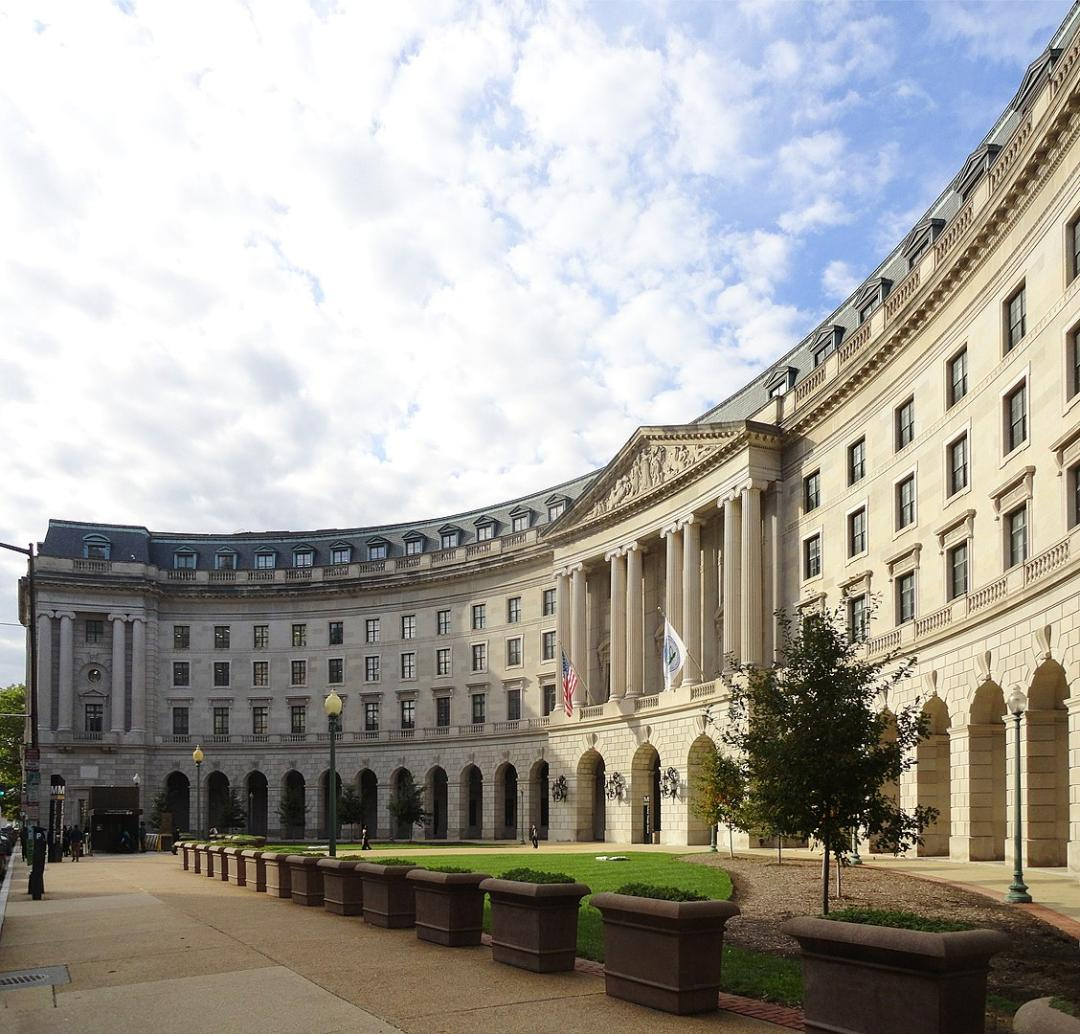 The Environmental Protection Agency headquarters in Washington, D.C. in the William J. Clinton Federal Building. The EPA is considering changes to pollution regulations intended to at least forestall some risks of global climate change. EPA
The Environmental Protection Agency headquarters in Washington, D.C. in the William J. Clinton Federal Building. The EPA is considering changes to pollution regulations intended to at least forestall some risks of global climate change. EPA
With a backdrop of record heat and floods, EPA moves to deregulate greenhouse gases that are heating the planet
Stephen Smith is the executive director of the Southern Alliance for Clean Energy.
KNOXVILLE — July was brutal: As the Southeast sizzled under a stagnant heat dome, families still struggled to recover from hurricanes Helene and Milton, and communities reeled from catastrophic flash flooding in Texas. Yet in the face of this mounting climate crisis, the government has launched an unprecedented assault on the environmental protections that keep Americans safe.
This week, the new Environmental Protection Agency (EPA) under the Trump Administration moved to repeal the 16-year-old scientific finding that greenhouse gas pollution and emissions from power plants, the oil, gas and coal industries, and vehicle emissions endanger public health and welfare. Without this endangerment finding, the EPA will be forced to abandon its responsibility to set limits on the pollution that’s driving more frequent and severe heat waves, floods and storms.
The EPA has one job: to protect the people and places we love — our families, our communities, our children’s future. It defies logic and common sense to remove the foundational pillars of our pollution rules precisely when climate impacts are accelerating and we need protections and proactive solutions the most. Simultaneously, the Administration is also recklessly slashing funding and staffing at NOAA, the agency responsible for helping us prepare for disasters, and FEMA, the agency responsible for helping us recover from disasters.
The administration is gaslighting Americans by telling us that climate disruption isn’t a threat when we can see with our own eyes the parade of horribles of repeating record-breaking climate disasters. 2024 was the hottest year on record by a wide margin, flash flood warnings in 2025 have already exceeded previous records and American families — from Texas flood victims to Southeast hurricane survivors — are paying the price with their lives, homes and livelihoods.
Dust to dust: Bull Run stack hits the deck as TVA kicks coal to curb
Written by Ben Pounds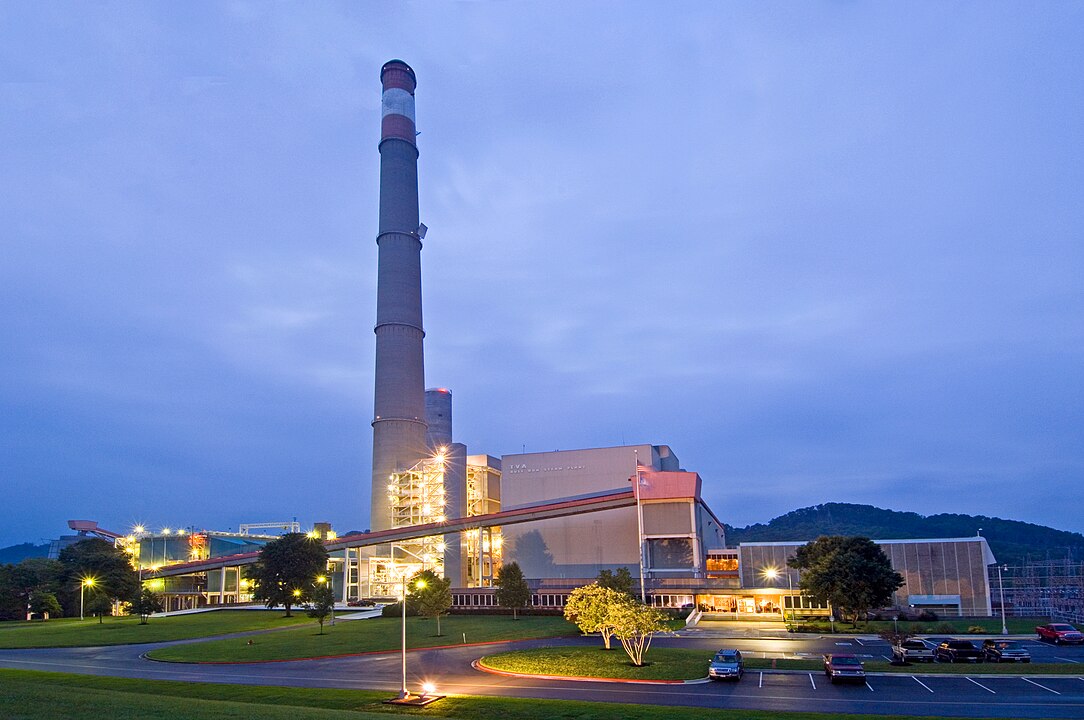 The regionally famous Bull Run smokestack was demolished this summer by the Tennessee Valley Authority as the federal utility phases out the use of coal to generate electricity. Climate activists are alarmed by TVA’s plans to replace coal with natural gas, itself a powerful greenhouse gas pollutant. Tennessee Valley Authority
The regionally famous Bull Run smokestack was demolished this summer by the Tennessee Valley Authority as the federal utility phases out the use of coal to generate electricity. Climate activists are alarmed by TVA’s plans to replace coal with natural gas, itself a powerful greenhouse gas pollutant. Tennessee Valley Authority
What’s next for mammoth utility after demolition of Claxton, Tenn. landmark stack?
CLAXTON — In a matter of seconds, the old smokestack fell like a giant tree, heaving clouds of dust as it hit the ground. Workers set off the implosion with a loud boom at the base of the towering smokestack on June 28, at Bull Run Fossil Plant just outside of Oak Ridge. Minutes earlier, the shorter and more modern ‘scrubber’ bit the dust in similar fashion.
Editorial: Clean energy jobs under attack and imperiled in Southeast
Written by Stephen Smith Macon-based Blue Bird is among Southeastern manufacturers that invested heavily in electric vehicle development thanks in large part to parts of the Inflation Reduction Act. The Biden-era IRA is facing blowback from the Trump administration, and the GOP-led Congress is trying to claw back billions already committed by the law. Blue Bird
Macon-based Blue Bird is among Southeastern manufacturers that invested heavily in electric vehicle development thanks in large part to parts of the Inflation Reduction Act. The Biden-era IRA is facing blowback from the Trump administration, and the GOP-led Congress is trying to claw back billions already committed by the law. Blue Bird
After DOGE, thousands of jobs still threatened and climate action under assault by GOP-led Congress
Stephen Smith is the executive director of the Southern Alliance for Clean Energy and chairs the Board of Directors of the Foundation for Global Sustainability, of which Hellbender Press is a project.
KNOXVILLE — As we navigate the complex landscape of America's energy transition, the Southeast finds itself at a critical juncture where federal policy decisions are attempting to block and reverse our region's clean energy future—and push up your monthly utility bills. This is not hyperbole; it is a sad reality that needs a strong response from those of us who want a clean, safe, vibrant future in which we all thrive.
The GOP-backed bill that moved from the House to the Senate threatens to undermine $73 billion in clean energy investments across our region by abruptly blocking federal policy support that has unleashed America’s clean energy economy, grown manufacturing and investments in the Southeast, and given citizens across our region ways to save money on energy while protecting human and environmental health.
If passed, this legislation could trigger utility rate increases nationwide, hitting households already struggling with rising costs. The timing couldn't be worse, as utility companies across the Southeast are rushing headlong into expensive and risky ventures—from nuclear plant construction to powering energy-hungry data centers—without adequate planning, regulation, or public input. Georgia Power's latest Integrated Resource Plan process and TVA’s rush to build new small nuclear reactors exemplify this troubling trend, proposing changes virtually guaranteed to increase customer bills while maintaining heavy reliance on polluting fossil fuels.
Nokian Tyres makes rubber hit the road for conservation of endangered fish in Southeast Tennessee
Written by Wes Boling A laurel dace (Chrosomus saylori) collected by Tennessee Aquarium Conservation Institute scientists at Bumbee Creek in Rhea County, Tenn. Tennessee Aquarium
A laurel dace (Chrosomus saylori) collected by Tennessee Aquarium Conservation Institute scientists at Bumbee Creek in Rhea County, Tenn. Tennessee Aquarium
Spring City set to celebrate a rare denizen of Walden Ridge almost decimated by drought
Wes Boling is marketing communications manager for Nokian Tyres Dayton Factory.
SPRING CITY — Nokian Tyres will serve as presenting sponsor of Laurel Dace Day, a community celebration of an endangered fish, set for Saturday, May 17, in Spring City.
The inaugural event led by the Tennessee Aquarium raises awareness of the laurel dace, a critically endangered fish found only in the Walden Ridge area 20 miles from Nokian Tyres’ North American factory in Dayton.
Laurel Dace Day features a 5K race and half-mile family fun run, followed by a festival at the Spring City Nature Park with live music, a farmers’ market, local vendors and conservation education. The event is free to attend, other than registration fees for participation in the races.
Community members can learn more about the event and register for races at TNAqua.org
- laurel dace day spring city
- nokia tires environment
- rare fish of east tennessee
- cumberland plateau drought
- cumberland plateau fish
- tennessee aquarium
- wes boling
- dayton, tn
- walden ridge
- tennessee aquarium conservation institute
- melanie king aquarium
- nokian tyres’ north american factory
- spring city nature park
- leed
- leadership in energy and environmental design
- iso 14001 certification
Bees, fish and plants show how climate change is disrupting nature in 2 key ways
Written by Courtney McGinnis A bee pollinates an almond tree in an orchard. Concerns are growing that there is an increasing disconnect between pollinating plants and their pollinators due to climate change. David Kosling/U.S. Department of Agriculture
A bee pollinates an almond tree in an orchard. Concerns are growing that there is an increasing disconnect between pollinating plants and their pollinators due to climate change. David Kosling/U.S. Department of Agriculture
The problem with climate change isn’t just the temperature. It’s how fast the climate is changing.
This story was originally published by The Conversation. Courtney McGinnis is a professor of biology, medical sciences and environmental sciences at Quinnipiac University.
Historically, Earth’s climate changes have generally happened over thousands to millions of years. Today, global temperatures are increasing by about 0.36 degrees Fahrenheit (0.2 degrees Celsius) per decade.
Imagine a car speeding up. Over time, human activities such as burning fossil fuels, have increased the amount of greenhouse gases in the atmosphere. These gases trap heat from the Sun. This is like pressing the gas pedal. The faster the driver adds gas, the faster the car goes.
The 21st century has seen a dramatic acceleration in the rate of climate change, with global temperatures rising more than three times faster than in the previous century.
The faster pace and higher temperatures are changing habitat ranges for plants and animals. In some regions, the pace of change is also throwing off the delicate timing of pollination, putting plants and pollinators such as bees at risk.
Some species are already migrating
Most plant and animal species can tolerate or at least recover from short-term changes in climate, such as a heat wave. When the changes last longer, however, organisms may need to migrate into new areas to adapt for survival.
- climate change
- global warming
- climate change effects
- courtney mcginnis
- quinnipiac university
- climate change migration
- bees climate change
- fish climate change
- species diversity
- species extinction
- the conversation
- greenhouse gases
- plants and pollinators
- plants and climate change
- diapause
- phenological mismatch
- early blooming climate change
Southeastern electric vehicle sales and investments arc against headwinds
Written by Stan Cross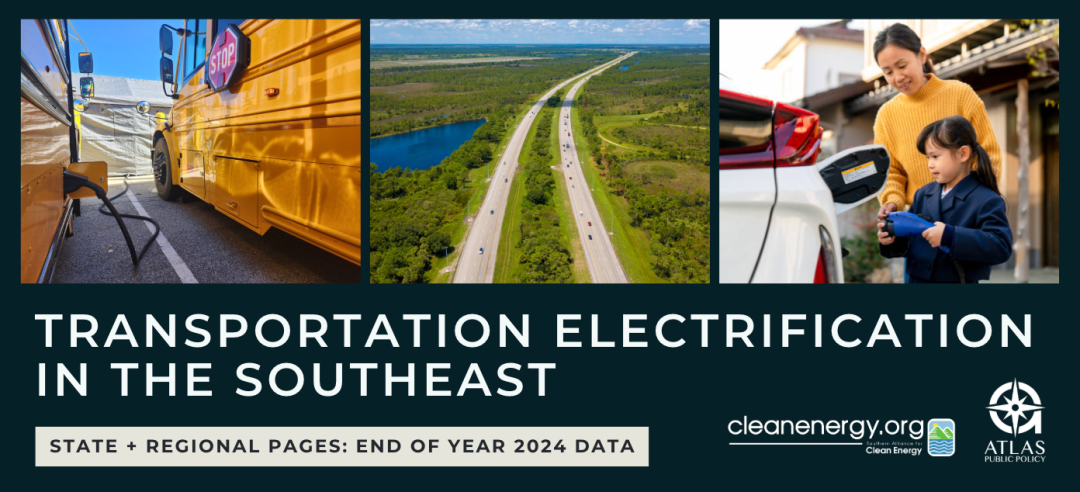
Georgia and North Carolina lead EV investment and jobs; Florida tops market share and growth; Tennessee and Alabama lag behind
Stan Cross leads the Southern Alliance for Clean Energy dynamic Electric Transportation Team.
KNOXVILLE — Misinformation about the technology and the state of the electric-vehicle market is rampant. But beyond the noise are the facts, which show that the Southeast’s EV market is zipping along.
The Southeast continues to lead the nation in electric vehicles and battery-related jobs and private-sector investments. As of the end of 2024, updated data from the fifth annual Transportation Electrification in the Southeast report found that the region is home to a whopping 38 percent of the nation’s $215 billion in announced private-sector EV and battery investments and 31 percent of the anticipated 238,000 jobs. Georgia remains No. 1 in anticipated jobs and committed investments, with North Carolina a close second.

These investments deliver economic development and employment to our region’s rural communities. Toyota’s $13.9 billion battery manufacturing facility in Randolph County, North Carolina, is at the top of the rural economic development list. The facility is expected to create 5,100 jobs and is the nation’s most valuable clean energy investment. Hyundai has made the second-largest regional investment at its battery manufacturing and EV assembly plant in Bryan County, Georgia. That investment tops $6 billion and is expected to create 3,400 jobs. It has had a massive ripple effect, with Hyundai suppliers announcing more than $2.7 billion in investments and an anticipated 6,900 jobs across the state.
‘A day of hope:’ Months after rescue from drought, endangered laurel dace return to the wild
Written by Casey Phillips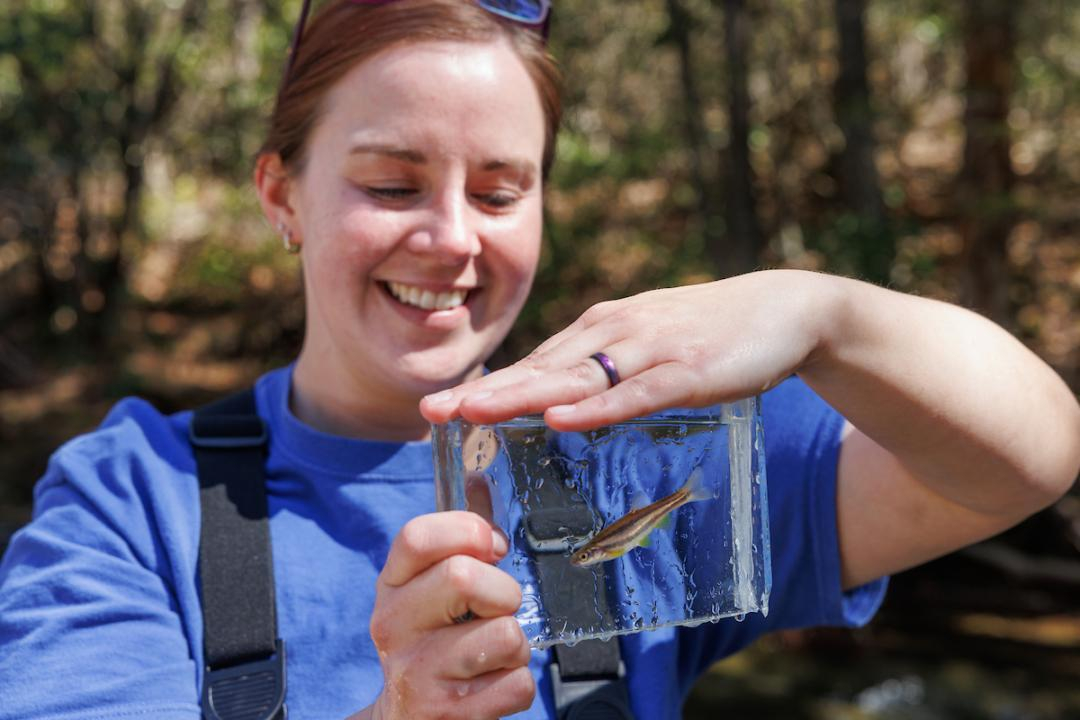 Tennessee Aquarium Reintroduction Biologist II Teresa Israel examines a critically endangered laurel dace before its reintroduction to the wild in March 2025. In July 2024, about 300 of these fish — considered by scientists to be among the most imperiled in North America — were rescued out of rapidly drying streams on Walden Ridge north of Chattanooga. Tennessee Aquarium
Tennessee Aquarium Reintroduction Biologist II Teresa Israel examines a critically endangered laurel dace before its reintroduction to the wild in March 2025. In July 2024, about 300 of these fish — considered by scientists to be among the most imperiled in North America — were rescued out of rapidly drying streams on Walden Ridge north of Chattanooga. Tennessee Aquarium
Improving drought conditions on Cumberland Plateau enabled return of fish after 2024 rescue
Casey Phillips is a communications specialist at the Tennessee Aquarium in Chattanooga.
CHATTANOOGA — After being saved from near-certain extinction last summer and overwintering in the expert care of biologists at the Tennessee Aquarium, more than 230 critically endangered laurel dace are finally back where they belong.
Last July, a prolonged regional drought caused many Southeast Tennessee streams to dwindle and, in some cases, dry up entirely. Atop Walden Ridge north of Chattanooga, water flow ceased at Bumbee Creek and Youngs Creek, the last sites known to support populations of Chrosomus saylori, the laurel dace.
When conditions in these rapidly disappearing waterways reached a tipping point, the Aquarium led a series of emergency rescue operations to save as many of these red-bellied, highlighter-yellow-finned minnows as possible. In coordination with the Tennessee Wildlife Resources Agency and with assistance from the U.S. Fish and Wildlife Service and the University of Georgia, about 300 laurel dace — the majority left on the planet — were relocated into the safety of human care at the Tennessee Aquarium in Chattanooga and Wolf Creek National Fish Hatchery in Jamestown, Kentucky.
According to the most recent report from the USDA’s U.S. Drought Monitor, much of Southeast Tennessee is still experiencing moderate drought conditions. However, a slightly wetter-than-average February made it safe to return these rescued minnows to the wild.
- tennessee aquarium
- laurel dace
- endangered fish
- endangered fish in tennessee
- cumberland plateau drought
- saving fish from drought
- jason miller
- anna george
- biologist ii teresa israel
- spring city, tn
- laurel dace day spring city
- chrosomus saylori
- tennesse wildlife resources agency
- twra
- us fish and wildlife service
First UT sustainability symposium offers a collaborative vision for the future
Written by Lucas Hunter
All great scientific solutions start with collaboration
KNOXVILLE — The challenges facing the planet and its inhabitants have long been too complex for any one individual or group to address, and that’s why the great advancements in modern science begin with conferences, symposiums and collaboration.
The first Environmental Future Symposium is an effort from the University of Tennessee Office of Sustainability to present a vision of the future for area residents and University of Tennessee students.
Planned for the Agriculture and Natural Resources Ballroom and Plaza from 2 p.m. to 6 p.m. March 27, the symposium is spearheaded by the office’s Alternative Energy and Transportation Coordinator Ben Gouffon. His vision for the event is simple: at the intersection of human-accelerated climate destabilization and a revitalization of the collapsing biosphere sits every individual and their actions. His hope is that this symposium is an avenue for every attendee to discover what they can do for Knoxville, the university and the planet they call home.
More...
Updated 2/28: Energy secretary on visit to an uncertain Oak Ridge shrugs at climate change; offers little concrete update on federal cuts
Written by Ben PoundsU.S. Sen. Bill Hagerty, R-Tenn.; U.S. Secretary of Energy Chris Wright; Rep. Chuck Fleischmann; R-Chattanooga; and Open AI CEO Greg Brockman spoke with the press during a tour of Oak Ridge-area nuclear facilities. Ben Pounds/Hellbender Press
Visit by energy secretary doesn’t address program cuts as former fracking CEO downplays climate change threat; visit comes following diversity program cuts; full extent of Oak Ridge impacts still unknown
Hellbender Press typically avoids the use of anonymous sources. The sources in this story spoke on condition they not be identified so they could speak on a sensitive matter.
This story will be updated. The original stories continue below.
OAK RIDGE — U.S. Secretary of Energy Chris Wright denied that climate change was a “crisis” and downplayed its threat during a visit to an international hub of scientific expertise rattled by early actions of the second Trump Administration. His visit did little to allay fears of cuts to staff and programs at Oak Ridge National Laboratory, where the most concrete signs of change have been the dismantling of diversity efforts.
Wright visited ORNL on Feb. 28, and at a press conference defended the Trump administration’s actions on climate change, energy sources and the Department of Government Efficiency (DOGE), a group headed by Elon Musk that has recommended cutting programs and staff in various government departments.
He did not announce any layoffs at the lab itself, however, and implied research related to climate there will continue. Oak Ridge National Laboratory is home to many kinds of related research, including at the Climate Change Science Institute. CCSI does modeling and gathers data on the climate, as well as working on solutions to the problem.
Wright promoted research on artificial intelligence, which he called “Manhattan Project II,” and nuclear energy, and he appeared alongside Sen. Bill Hagerty, R-Tenn., Rep. Chuck Fleischmann R-Chattanooga and Open AI CEO Greg Brockman, who also spoke and answered questions.
“I don’t think you’ll see any reduction in the science that we do regarding climate change or any of these other really big questions,” said Wright in response to a reporter’s questions about how cuts at the lab might affect climate change-related research at ORNL, which his department funds through a partnership with contractor Battelle and the University of Tennessee. He said, however, he still “100 percent” believed there was no climate “crisis” and said scientific reports backed up his view.
“We haven’t seen an increase in the frequency or intensity of hurricanes, floods, droughts, storms. Wildfires are on an uptick because we stopped managing our forests,” he said. “Deaths from extreme weather, which is what you hear the press and politicians’ fearmongering about, it declined over 90 percent in my lifetime as the population’s grown. So climate change is a real phenomenon. It’s just not even remotely close to the world’s biggest problem.” He also said an intergovernmental climate change report also showed economists saying climate change was not as important as issues like education, free trade and “empowerment.”
These claims are a mixed bag of truth. While the frequency of hurricanes hitting the United States, for example, hasn’t increased, a recent Columbia University study showed the tropical cyclones’ intensity for the East and Gulf Coasts has. Also unmentioned by Wright was any impact the climate has on disease or health conditions apart from extreme weather, a subject on which experts at Tennessee’s own Vanderbilt University have sounded the alarm.
Wright was CEO of a hydraulic fracking company, Liberty Energy, before his appointment.
“It’s a real thing, but nothing in the science of climate change or in the economics of climate change shows it to be the world’s biggest problem,” Wright said. “When you call something a crisis, it means we don’t have time to stop and think. We’ve just got to take action. That’s exactly the opposite of what climate science is.”
During the meeting, he also defended Musk, DOGE and Trump’s actions generally while not announcing any such cuts for the civilian research at Oak Ridge National Laboratory or the weapons maintenance at Y-12, which is managed by a different contractor. A reporter at the event mentioned an earlier instance in which workers at Y-12 National Security Complex received termination letters that were then rescinded. While the reporter asked him to offer reassurance on job security, he sidestepped that question.
- doge oak ridge
- doge cuts in oak ridge
- oak ridge national laboratory climate change institute
- did oak ridge get doge cuts
- trump and environment
- ornl jobs
- ornl employee meeting
- doe diversity
- doe office of science
- stephen streiffer
- inflation reduction act clean energy
- doe science focus
- ben pounds
- ornl source
- climate change
- is climate change real?
- chris wright
- energy secretary chris wright
- greg brockman
- open ai
Helene: Haul water, rescue pigs, help neighbors: How Warren Wilson College students confronted climate chaos
Written by Mallory McDuff A student farm leader takes care of pigs at Warren Wilson College in Swannanoa. Most of the college’s pigs were recovered following fatal flooding from the Swannanoa River on Sept. 28, 2024. Warren Wilson College
A student farm leader takes care of pigs at Warren Wilson College in Swannanoa. Most of the college’s pigs were recovered following fatal flooding from the Swannanoa River on Sept. 28, 2024. Warren Wilson College
Collective action helps alleviate climate anxiety in wake of Hurricane Helene
This story was originally published by The Revelator.
Mallory McDuff teaches environmental education at Warren Wilson College.
SWANNANOA, N.C. — “We need 10 people on flush crew, five to clean out the fridges in the science building, and 15 to clear trees on the roads! We’re gonna do this together!”
This wasn’t a pep rally or a community service event. It was the morning meeting called at 9:30 a.m. each day by campus leaders in front of the cafeteria at the small college where I lived without power or water, after the climate disaster of Hurricane Helene devastated our community in Western North Carolina.
“We know the Swannanoa Valley has been hit especially hard,” the college president told the group of students and employees. “And we are here for this college and for the greater community. This is our work together.”
That day I joined my neighbor Tom Lam chain-sawing his way across campus with a crew of students clearing brush along the way.
“Now gather ‘round so you can see how to sharpen this chainsaw,” Tom said in his booming Jersey voice, pulling on his suspenders after we’d cleared trees that crushed a neighbor’s car.
I’ve spent 25 years teaching environmental education, raising two daughters, and living at this 1,000-acre campus where all students work in jobs in places like the farm, garden, forests, and even fiber arts. And I think this might be one model of how to live in community in a climate emergency.
- how to live in community in a climate emergency
- warren wilson college
- hurricane helene warren wilson
- hurricane helene
- hurricane helene local impacts
- swannanoa
- swannanoa river
- mallory mcduff
- hurricane helene livestock
- climate emergency
- climate activist
- was warren wilson hit by hurricane
- what did warren wilson do during hurricane
- extreme weather
- southern appalachians natural disaster
UT scientists help decode the DNA of an iconic American tree
Written by Patricia McDaniels This white oak (Quercus alba) in Burlington, N.J. is known as the Keeler Oak. It is an estimated 300 years old and is emblematic of the role these massive trees can play in the forest and beyond. The white oak is a highly valuable tree, both economically and ecologically. Its seedling survival rate is declining, but University of Tennessee researchers joined others to map the species’ DNA. Wikipedia Commons
This white oak (Quercus alba) in Burlington, N.J. is known as the Keeler Oak. It is an estimated 300 years old and is emblematic of the role these massive trees can play in the forest and beyond. The white oak is a highly valuable tree, both economically and ecologically. Its seedling survival rate is declining, but University of Tennessee researchers joined others to map the species’ DNA. Wikipedia Commons
New research involving University of Tennessee describes the genome of the mighty white oak
Patricia McDaniels is news and information manager for the University of Tennessee Institute of Agriculture.
KNOXVILLE — Highly valued economically, ecologically and culturally, the white oak (Quercus alba) is a keystone forest species and is one of the most abundant trees across much of eastern North America. It also faces declining seedling recruitment in many parts of its range.
In a paper published in New Phytologist, researchers representing the University of Tennessee Institute of Agriculture, Indiana University, the University of Kentucky, the U.S. Forest Service and several more institutions described for the first time the species’ complex genome, providing insights into fundamental questions about plant evolution, tree breeding and genetic improvement efforts that could help forest managers plan for and address future forest resources.
Lead authors of the paper Meg Staton, associate professor of bioinformatics and computational genomics in the UT Department of Entomology and Plant Pathology, and Drew Larson, National Science Foundation postdoctoral fellow at Indiana University, coordinated with colleagues across the nation in academia, the U.S. Forest Service, state forests and industry to obtain genetic sequence data representative of the species.
Also central to the effort were Seth DeBolt, professor of horticulture and director of the James B. Beam Institute for Kentucky Spirits at the University of Kentucky, and Dana Nelson of the U.S. Forest Service Southern Research Station and director of the Forest Health Research and Education Center at the University of Kentucky.
White oak barrels are lifeblood to the bourbon industry because the color and much of the whiskey’s flavor derive from the charred wood in which it is aged.
- meg staton
- seth debolt
- loretto, kentucky
- makers mark
- independent stave company
- white oak
- quercus
- new phytologist
- patricia mcdaniels
- utia
- utia tree program
- University of Tennessee Agricultural Institute
- quercus alba
- scott schlarbaum
- genome
- bioinformatics
- computational genomics
- genetic sequencing
- gene annotation
- gene evolution
- genetic diversity
- tree improvement program
- phylogenetics
- bourbon whiskey
- oak barrel
2025 Keep Knoxville Beautiful Annual Summit
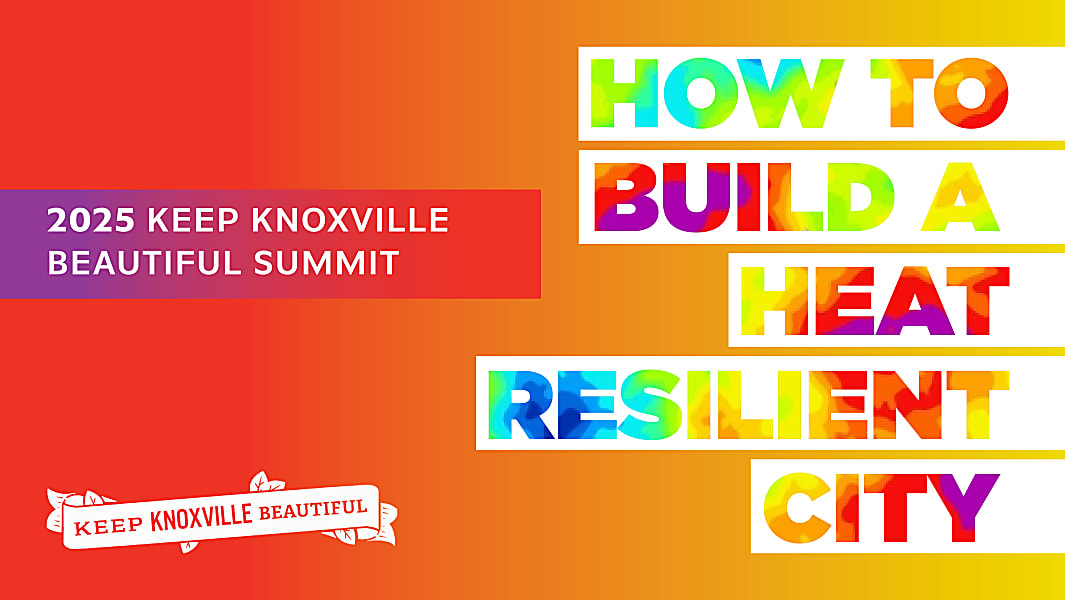
6th Annual Summit on February 7, 2025!
Lunch will be included for all attendees from Brown Bag.
There is a limited number of tickets available. We anticipate this event selling out, so get your ticket while you can!